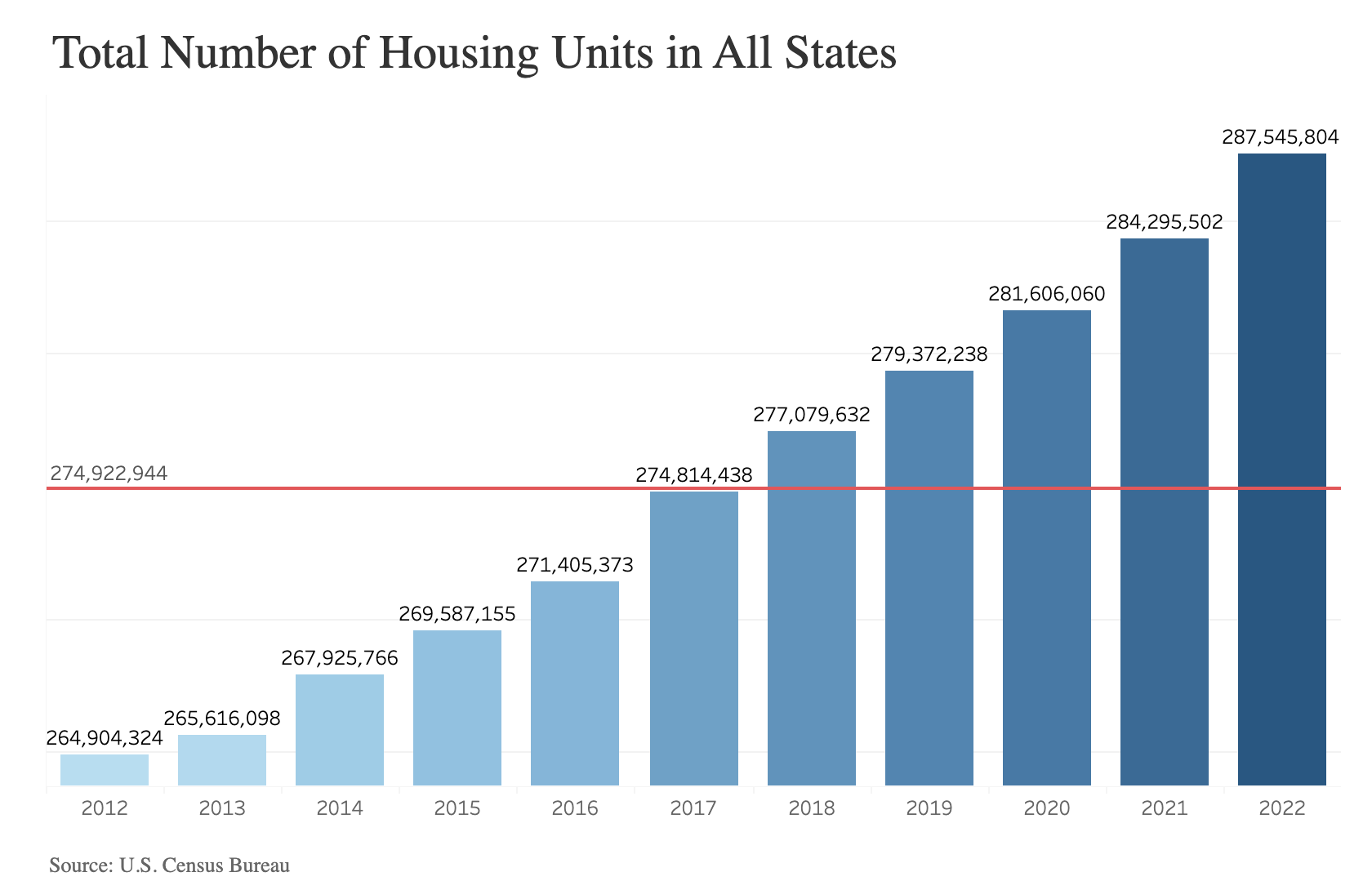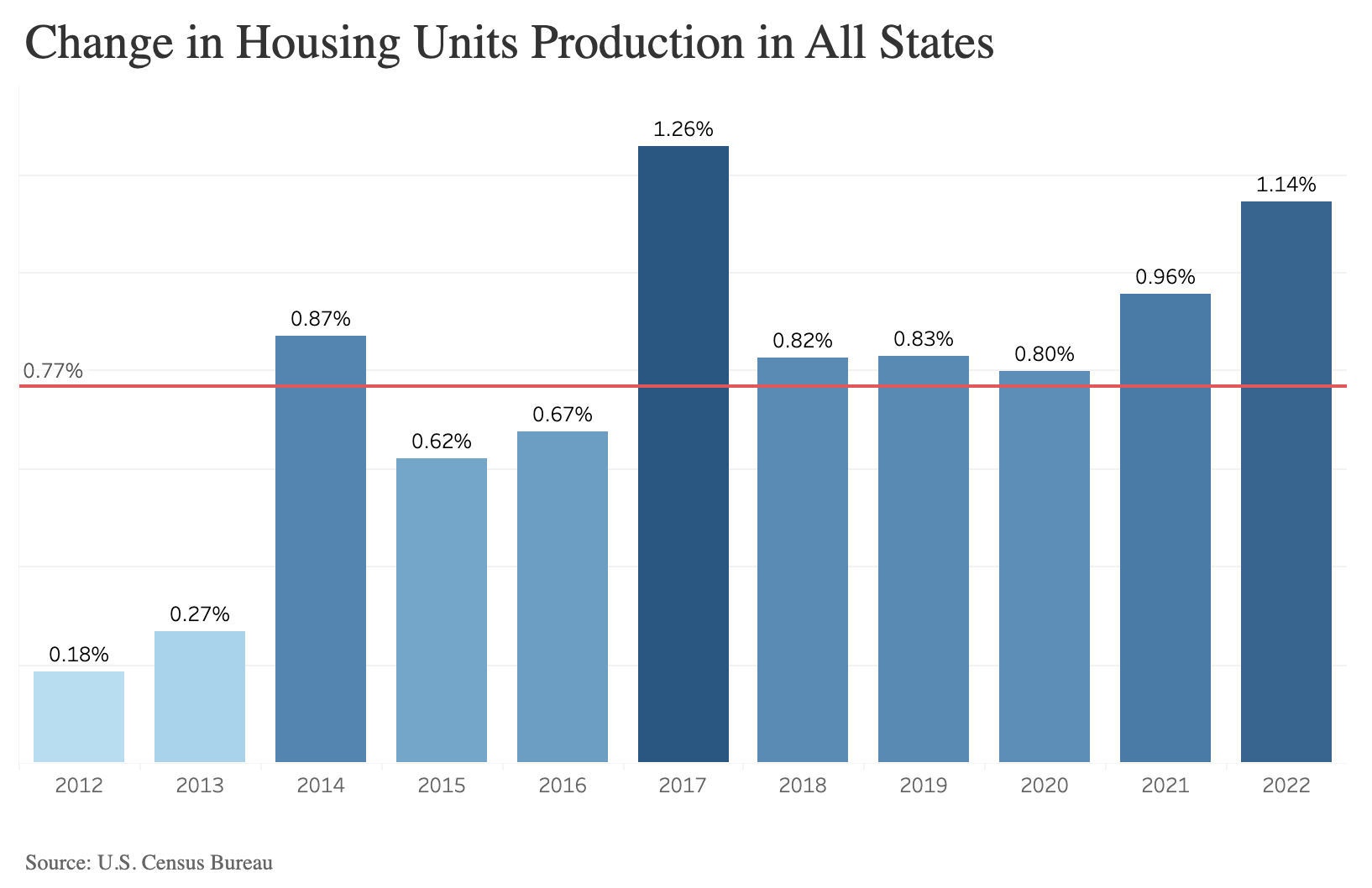New-home construction across the nation surged to a six-month high, Bloomberg reported in December, fueling optimism that builders are working to address the country’s housing shortfalls.
Citing census data, a recent report from Bloomberg details the bump: Residential starts increased 14.8% month over month to a pace of 1.56 million annual units, while single-family house starts jumped even higher, by 18%, the highest level seen since April 2022 and a 42% increase from a year ago.
The growth in November housing starts was seen across all United States regions, including a notable jump of 16.3% in the South; starts were up 1.4% in the Midwest.
And, although demand for multi-family projects decreased somewhat, permits for additional single-family houses increased to the highest level since May 2022.
The new stats also showed that builder sentiment increased during November for the first time since July, reflecting a positive sales outlook as the industry comes out of a tight year.
“While housing starts have been dragging, the improved outlook for 2024 reflects expectations that lower mortgage rates will boost builder confidence and potentially lead to more construction across the U.S.,” CoreLogic Chief Economist Dr. Selma Hepp shared in a statement. “Lower mortgage rates will also help improve affordability, which has fallen to some of the lowest levels in history.”
Looking back further, to the past decade, the overall growth in construction is even more apparent. As we enter 2024, the National Association of REALTORS® (NAR) released an in-depth look at the years 2012-2022.
During that period, the number of housing units in the U.S. rose by 8.3%, or 11.3 million additional total units. However, NAR noted, most major metros are still struggling with housing shortages, if you compare the number of issued building permits with the number of local jobs created.
In 2022, the total number of housing units increased to 287.5 million, although the largest change occurred in 2017; that year reflected a year-over-year increase of 1.26%.
Across the full decade, the states of Texas, Florida and California saw the greatest increase in units, with increases of 2.1 million units, 1.6 million units and nearly 998,000 units, respectively. Meanwhile, Illinois ended 2022 with 5,452,441 total housing units, reflecting an increase of about 3% from 2012.
“As homebuilders ramp up production, more supply will reach the market,” NAR Chief Economist Lawrence Yun said, noting November’s leap in single-family construction. “Homebuilders’ sales have been up this year despite high mortgage rates due to the offer of incentives on buying down interest rates and the long-held business model of offering co-op commission to buyer agents. That’s the free market way of doing business in a very competitive industry.”
Referencing the ongoing housing shortage in so many markets, though, Yun noted even more homebuilding will be needed. “Home price appreciation can only moderate from drastically improved supply,” Yun said. “Another 30% rise in home construction can easily be absorbed in the marketplace, especially in light of recent weeks’ plunge in mortgage rates.”


